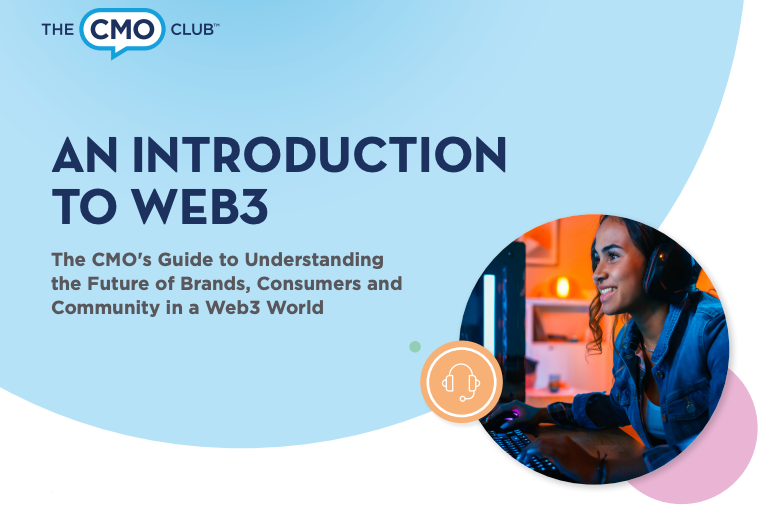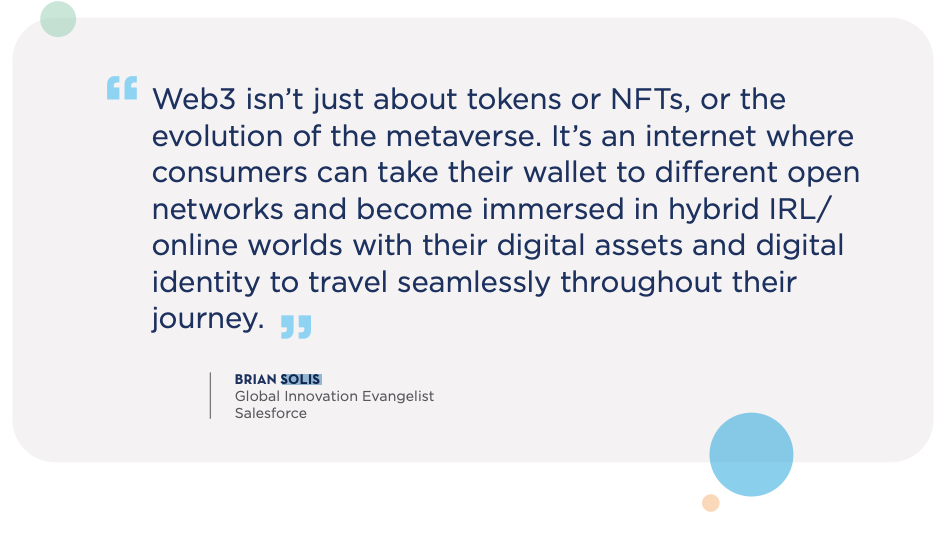Buckle up, marketers. You are in a front row seat on a ride to the next revolutionary iteration of the internet: Web3.
Conceptually, Web3 is a decentralized, permissionless, trustless internet experience—not requiring the support of a trusted intermediary—that employs peer-to-peer interaction and meritocracy to put power and ownership in the hands of individuals rather than centralized entities. It’s envisioned as a digital space where services are operated, owned, and improved upon by communities of users.
Concretely, Web3 is a new technology platform that employs digital advancements such as blockchain, cryptocurrency, the metaverse, decentralized autonomous organizations (DAOs) and non-fungible tokens (NFTs) to create this vision for a new, better internet.
Much of what it will take to make Web3 fully scalable and operable does not yet exist. But make no mistake, Web3 is imminent. And it is inevitable. It will change the way consumers interact with brands and how brands approach customer lifetime value. Thus, it is imperative for CMOs to understand the inner workings, opportunities and consumer benefits of Web3 to lead their organizations on the journey into Web3—and to secure a relevant place in the future.
At a recent CMO Club Innovation Forum on Web3, marketing leaders explored the fundamental knowledge and perspective needed to ensure that Web3 is positioned and deployed correctly within their organizations. This guide incorporates the information and insights presented at the forum.
“Much of what you’re seeing today is actually Web 2.0 using the blockchain,” notes Brian Solis, global innovation evangelist with Salesforce. Blockchain technology enables many of the current and future components of Web3, from metaverses to DAOs and dApps.
Solis notes the importance of this distinction for marketers, “With Web3, we have an opportunity to change the hierarchy of how we view brand and customer—to shift from consumer to community.”
New ways of thinking…
“In a decentralized world, brands have to think experientially and also ‘immersively,'” advises Solis. “This calls for a shift into two areas beyond brand design: relationship design and experience design. Immersive experiences can only be imagined for a new web and have to be designed as such. We can’t take what used to exist and put it in an entirely new world and expect it to ‘work.’”
You can download The CMO Club Web3 Playbook here.







Leave a Reply